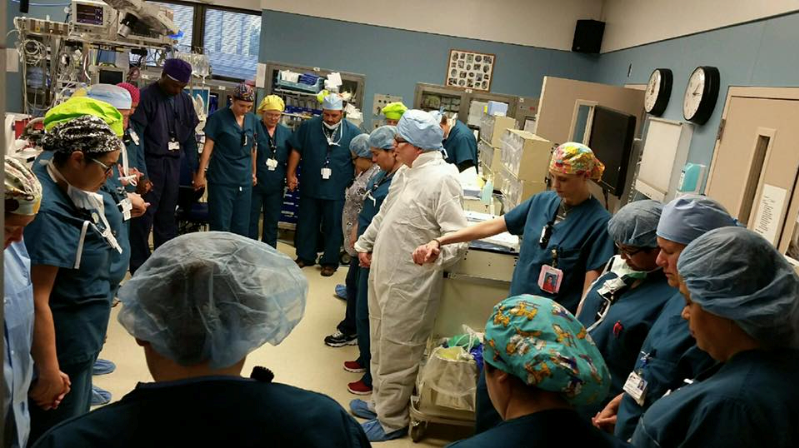We talk a lot about teamwork in hospital medicine. Since the inception of the specialty, we have long been embedded in, and understand and respect the need for, a multidisciplinary approach to patient care. We heavily depend on our pharmacists, nurses, respiratory therapists, case managers, physical therapists, LPNs, etc. to develop and implement a care plan for our patients. Although hospitalists intrinsically understand the importance of teamwork, many of us let logistics and schedules get in the way of truly performing as a team. To date, few hospitals have implemented true team-based care. It is often too difficult to coordinate complex admission rules and differing schedules. And even if we can manage to coordinate locations and calendars, we still have to figure out how to communicate amongst our teams in a way that is efficient and effective.
I recently ran across a series of award-winning healthcare photographs; this one struck me, as it exemplifies what teamwork looks like. It depicts a multidisciplinary team preparing to perform surgery to disconnect a pair of conjoined twins at Driscoll Children’s Hospital in Corpus Christi Texas. The team clearly understands the complexity of the pending procedure, but is also clearly committed to mutual respect and support to successfully accomplish this difficult task. This is what teamwork looks like.

Photo courtesy of KRISTV.com
Now imagine being the parent of the children about to get this operation. This team would impart upon you a sense of peace and calm, knowing that they are all pulling together for the betterment of your child. How often can we say that our hospitalist teams impart this degree of confidence?
So, the question is, how can we hospitalists get our teams to look, feel and act like the team in this photograph?
In my humble opinion, the first step is easy and requires no complex changes in routines or roundings. It is living the tenets of mutual respect, support and understanding for all the disciplines that we work with. Too often, we discount or minimize others’ input; sometimes we don’t even know who the other members of the team are, and never have a direct interaction with them throughout the day. If time and resources allow, the team can certainly implement more lavish interventions to enhance teamwork, such as formal teamwork training and geographic localization.
But in the meantime, we can be role models for our colleagues and trainees in the myriad of disciplines that help us impart peace and calm to our patients and their families. How? By showing respect, support and understanding to them and the patients and families we serve. This is what teamwork looks like.



Leave A Comment